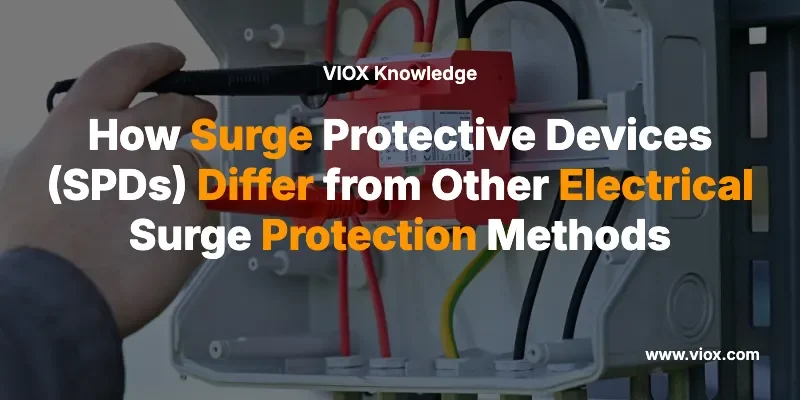Понимание устройств защиты от перенапряжения (УЗИП)
Определение и основная функция

A устройство защиты от перенапряжения (УЗИП) Это защитное устройство для ограничения переходных напряжений путём отвода или ограничения импульсного тока, способное повторять эти функции в соответствии с требованиями. УЗИП ранее назывались ограничителями переходных напряжений (TVSS) или вторичными разрядниками перенапряжения (SSA), но терминология была стандартизирована как УЗИП с принятием стандарта ANSI/UL 1449 (3-е издание) в 2009 году.
Фундаментальный принцип работы УЗИП заключается в параллельном подключении к цепи питания защищаемых ими нагрузок. УЗИП, подключенные параллельно, обладают высоким импедансом. При возникновении в системе кратковременного перенапряжения импеданс устройства уменьшается, и импульсный ток проходит через УЗИП, минуя чувствительное оборудование.
Система классификации SPD
Согласно Национальному электротехническому кодексу (NEC) и ANSI/UL 1449, УЗИП подразделяются на три основных типа в зависимости от места установки и предполагаемого применения:
УЗИП типа 1: защита служебного входа
Тип 1: Постоянно подключенные, предназначены для установки между вторичной обмоткой трансформатора собственных нужд и линией отключения максимального тока (вспомогательного оборудования). Их основное назначение — защита изоляции электросистемы от внешних перенапряжений, вызванных ударами молнии или переключением батареи конденсаторов.
Основные характеристики:
– Волна тока: импульсный ток 10/350 мкс
– Допустимый ток: от 50 000 до 200 000 ампер
– Установка: Оборудование для служебного входа
– Первичная защита от прямых ударов молнии
УЗИП типа 2: защита распределительного щита
Тип 2: Постоянно подключенные, предназначены для установки со стороны нагрузки устройства отключения питания (сервисного оборудования), включая места установки на панели управления. Их основное назначение — защита чувствительного электронного оборудования и микропроцессорных нагрузок от остаточной энергии молнии, перенапряжений, генерируемых двигателями, и других внутренних перенапряжений.
Основные характеристики:
– Волна тока: волна тока 8/20 мкс
– Допустимый ток: от 20 000 до 100 000 ампер
– Монтаж: распределительные щиты и узлы нагрузки
– Первичная защита электрических систем зданий
СПД типа 3: Защита точки использования
Тип 3: УЗИП точки использования, устанавливаемые на минимальной длине проводника 10 метров (30 футов) от электрощита до точки использования.
Основные характеристики:
– Волна тока: комбинация напряжения 1,2/50 мкс и тока 8/20 мкс
– Допустимый ток: от 5000 до 20 000 ампер
– Установка: Рядом с защищаемым оборудованием
– Последний уровень локальной защиты
Другие методы защиты от перенапряжения
Системы бесперебойного питания (ИБП)
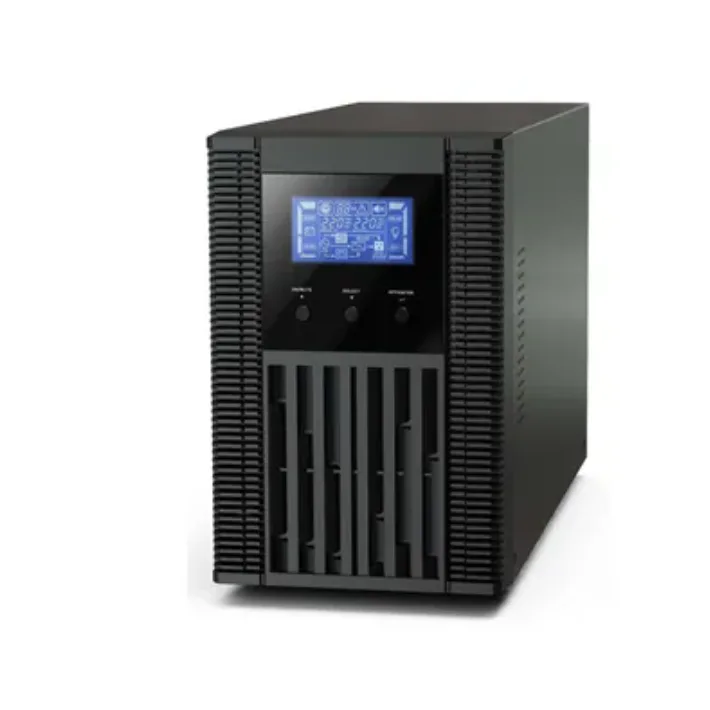
Системы ИБП обеспечивают комплексную защиту электропитания, выходящую за рамки простой защиты от перенапряжения. Эти устройства непрерывно контролируют входное напряжение и реагируют на проблемы с качеством электроэнергии, переключаясь на питание от аккумуляторов при отключениях или серьёзных помехах.
Характеристики защиты ИБП:
– Время отклика: 2–10 миллисекунд для передачи мощности
– Сфера защиты: Индивидуальный уровень оснащения
– Текущая обработка: переменная в зависимости от мощности агрегата
– Дополнительные функции: Резервное питание от аккумуляторных батарей, стабилизация мощности, регулировка напряжения
– Диапазон затрат: $100-5000+ в зависимости от мощности
Ограничения ИБП для защиты от перенапряжения:
– Более медленное время отклика по сравнению с SPD
– Ограниченная способность выдерживать импульсные токи
– Требуется обслуживание и замена батареи
– Не рассчитан на сильные грозовые перенапряжения
Сетевые фильтры против обычных сетевых фильтров
Базовые удлинители
Удлинитель — это блок электрических розеток, позволяющий подключать несколько электроприборов к одной розетке. Обычные удлинители не обеспечивают защиты от перенапряжения, несмотря на визуальное сходство с фильтрами.
Характеристики:
– Функция: только распределение электроэнергии
– Защита: автоматический выключатель только от перегрузок
– Время отклика: нет защиты от перенапряжения
– Стоимость: $10-30
– Применение: некритичные устройства, где не требуется защита от перенапряжения.
Сетевые фильтры для бытовой техники
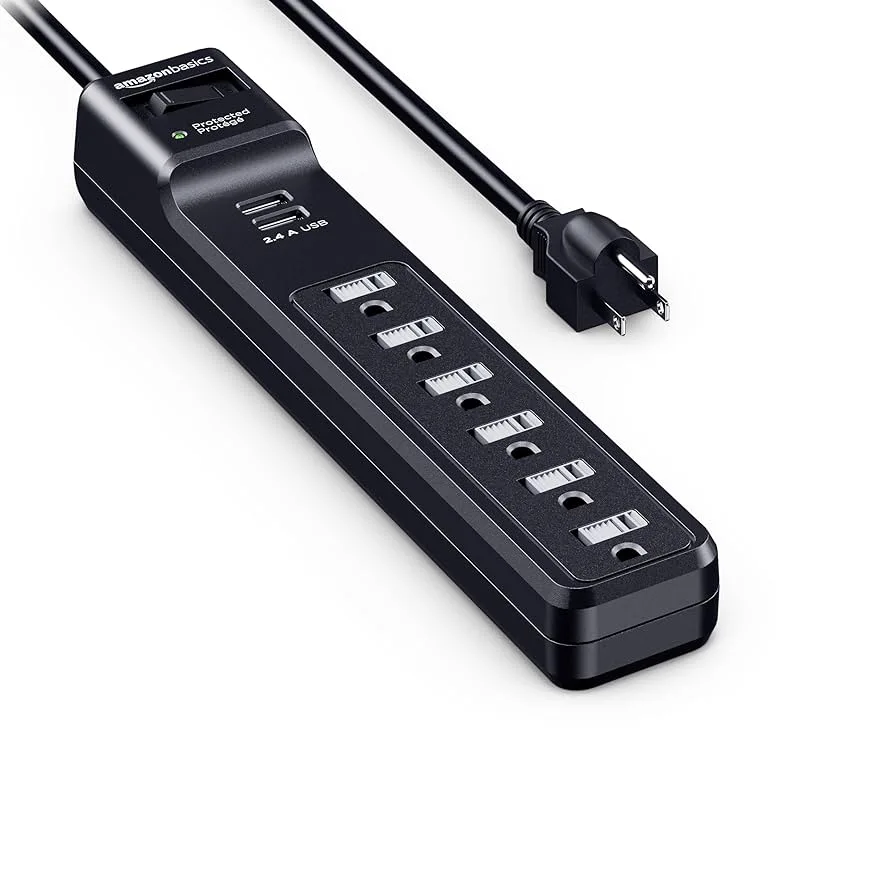
Главное отличие сетевого фильтра от сетевого фильтра заключается в том, что в сетевом фильтре используется металлооксидный варистор (МОВ). МОВ отводит опасные скачки напряжения от подключенных устройств.
Характеристики:
– Допустимый ток: обычно 1000–4000 джоулей
– Время отклика: 25 наносекунд (на основе MOV)
– Область защиты: только устройства, подключенные непосредственно к полосе
– Напряжение зажима: 330-600 вольт
– Срок службы: уменьшается с каждым всплеском
Металлооксидные варисторы (MOV)
Металлооксидные варисторы — это резисторы, зависимые от напряжения, которые составляют основу технологии большинства бытовых устройств защиты от перенапряжения. Металлооксидные варисторы содержат керамическую матрицу из зёрен оксида цинка, границы зёрен которых образуют диодные переходы.
Операция MOV:
– Нормальные условия: Высокое сопротивление при минимальном токе
– Условия помпажа: Лавина пробивается, создавая путь с низким сопротивлением
– Время отклика: 25 наносекунд
– Текущая обработка: 1000–20 000 ампер в зависимости от размера
Ограничения MOV:
– Прогрессирующая деградация при повторном воздействии скачков напряжения
– В конечном итоге потребуется замена после многократного скачка напряжения
– В базовых реализациях нет указания статуса защиты
Диоды подавления переходных напряжений (TVS)
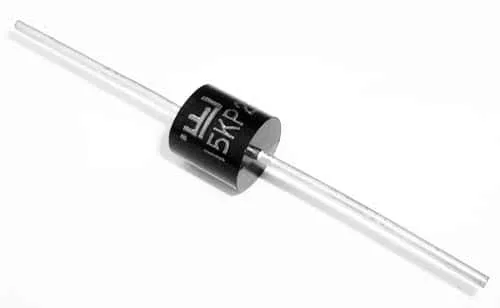
TVS-диоды — это специализированные лавинные диоды, предназначенные для сверхбыстрой защиты от перенапряжения в чувствительной электронике.
Характеристики TVS-диода:
– Время отклика: 1 пикосекунда (самая быстрая из доступных)
– Текущая обработка: пиковый импульс 10 000–30 000 ампер
– Точность напряжения: Очень точные уровни зажима
– Продолжительность жизни: Отсутствие эффектов старения, превосходная долгосрочная стабильность
– Приложение: Защита на уровне печатных плат в электронном оборудовании
Преимущества перед MOV:
– Отсутствие ухудшения со временем
– Чрезвычайно быстрая реакция для защиты от электростатического разряда
– Точные характеристики ограничения напряжения
– Надежная работа в течение всего срока службы устройства
Газоразрядные трубки (ГРТ)
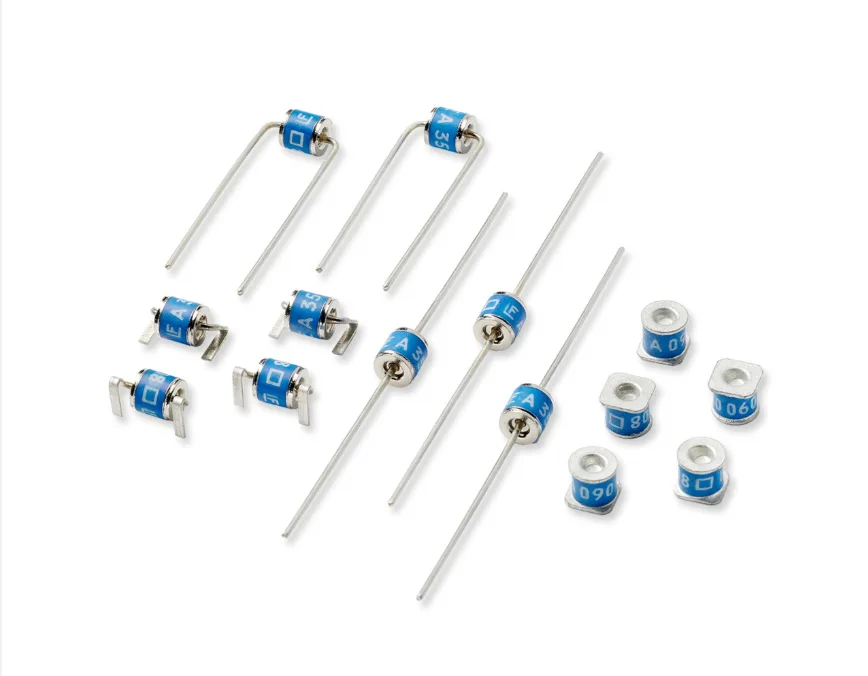
Газоразрядные трубки функционируют как управляемые напряжением переключатели, использующие принципы разряда инертного газа, обычно используемые в телекоммуникационном оборудовании.
Характеристики ГДТ:
– Время отклика: <1 микросекунды
– Текущая обработка: 10 000–40 000 ампер
– Нормальное состояние: Очень высокий импеданс, минимальная емкость
– Активированное состояние: Проводящий путь с низким импедансом
– Приложения: Телекоммуникации, высоковольтная защита
Автоматические выключатели и средства защиты
Традиционные автоматические выключатели
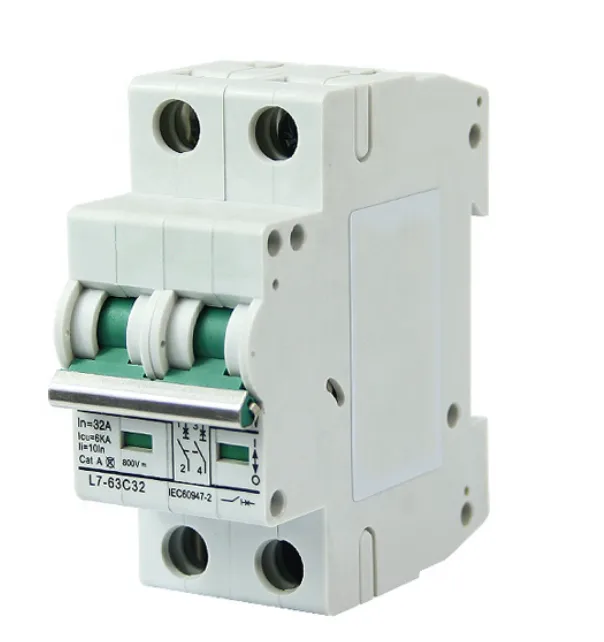
Автоматические выключатели обеспечивают защиту от перегрузки по току, но не предназначены для защиты от перенапряжения.
Технические характеристики автоматического выключателя:
– Функция: Защита от перегрузки по току и короткого замыкания
– Время отклика: 16-100 миллисекунд
– Защита от перенапряжения: Нет (слишком медленно для скачков напряжения)
– Текущая обработка: Номинальная сила тока для непрерывной работы
– Приложение: Общая защита электрических цепей
Защита от замыканий на землю (GFCI) и замыканий на землю (AFCI)
– GFCI: Защита от замыкания на землю (чувствительность 5 мА, время отклика 25–30 мс)
– АФКИ: Защита от дуговых замыканий для предотвращения пожаров
– Функция: Защитная функция, а не защита от перенапряжения
– Требования: Предписано NEC в определенных местах
Системы молниезащиты
Молниеотводы
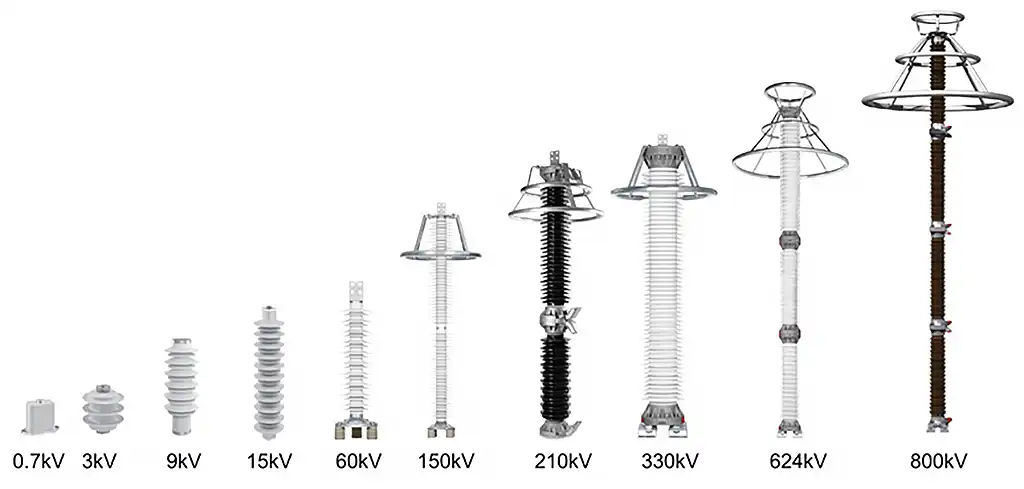
Молниеотводы защищают системы передачи и распределения от прямых ударов молнии и переходных процессов при коммутации.
Характеристики молниеотвода:
– Текущая обработка: 100 000+ ампер
– Уровни напряжения: Напряжение в системе передачи (>1000 В)
– Время отклика: Микросекунды
– Приложение: Системы передачи и распределения электроэнергии
– Стоимость: $1,000-10,000+ для устройств передающего класса
Громоотводы (воздухоприемники)
– Функция: Укажите предпочтительный путь удара молнии
– Защита: Защита структурных элементов здания
– Интеграция: Работает с системой заземления
– Текущая обработка: Полный ток молнии (до 200 000 ампер)
Оборудование для повышения качества и кондиционирования электроэнергии
Регуляторы и стабилизаторы напряжения
Стабилизаторы напряжения ориентированы на обеспечение стабильного качества электроэнергии, а не на защиту от кратковременных перенапряжений.
Характеристики регулирования напряжения:
– Функция: Поддержание постоянных уровней напряжения (±1-5%)
– Время отклика: Миллисекунды для коррекции напряжения
– Тип защиты: Защита от понижения и перенапряжения
– Приложение: Районы с низким качеством электроэнергии
– Стоимость: $100-1000+ в зависимости от мощности
Разделительные трансформаторы
– Функция: Электрическая изоляция и снижение перенапряжения
– Защита: Ослабление синфазных перенапряжений (-60 дБ или лучше)
– Обработка напряжения: импульсный вход 30 кВ, выход 10 кВ (типично)
– Приложение: Медицинское оборудование, чувствительные приборы
Фильтры электропитания и защита от электромагнитных помех
– Функция: Фильтрация электромагнитных помех и электрических шумов
– Операция: Непрерывная фильтрация кондуктивных электромагнитных и радиочастотных помех
– Компоненты: Индукторы, конденсаторы, ферритовые сердечники
– Объем: Дополняйте защиту от перенапряжения, а не заменяйте ее
УЗИП против других методов защиты от перенапряжения
| Метод | Функция | Ответ | Расположение | Текущий | Напряжение | Продолжительность жизни | Стоимость | Приложения |
|---|---|---|---|---|---|---|---|---|
| СПД Тип 1 | Молния | 25 нс | Вход в службу | 50-200 кА | 700-1500 В | Высокая прочность | Высокий | Сервисные панели |
| СПД Тип 2 | Распределение | 25 нс | Распределение | 20-100 кА | 600-1200 В | Высокая прочность | Средний | Ответвления цепей |
| СПД Тип 3 | Место использования | 25 нс | Рядом с оборудованием | 5-20 кА | 330-600 В | Средняя прочность | Низкий | Чувствительный эл. |
| Системы бесперебойного питания | Резервное питание | 2-10 мс | Уровень снаряжения | Переменная | ±3-5% | Зависит от батареи | Высокий | Критическое оснащение |
| Автоматические выключатели | Перегрузка по току | 16-100 мс | Распределение | Переменная | Никто | Очень высокий | Низкий | Общая схема |
| MOV-файлы | Зажим напряжения | 25 нс | Уровень устройства | 1-20 кА | Переменная | Деградирует | Очень низкий | Компонент защиты |
| TVS-диоды | Быстрый переходный процесс | 1 шт. | Уровень печатной платы | 10-30 кА | Очень точный | Нет старения | Низкий | Электроника |
| Газовый разряд | Высокое напряжение | <1 мкс | Уровень снаряжения | 10-40 кА | Высокое напряжение | Очень высокий | Средний | Телеком |
| Молниеносный арест | Защита от молнии | Микросекунды | Трансмиссия | 100+ кА | уровни кВ | Очень высокий | Высокий | Энергетические системы |
| Состояние питания | Качество электроэнергии | Непрерывный | Уровень снаряжения | Зависит от нагрузки | ±5-10% | Высокий | Высокий | Чувствительное оборудование |
| Изоляция Транс | Электрическая изоляция | Непрерывный | Уровень снаряжения | Зависит от нагрузки | Хорошая изоляция | Очень высокий | Высокий | Медицинское оборудование |
Комплексное сравнение: УЗИП и другие методы защиты
Анализ времени отклика
Сверхбыстрая защита (пикосекунды):
– TVS-диоды: 1 пикосекунда – Идеально подходят для защиты от электростатических разрядов и быстрых переходных процессов
Быстрая защита (наносекунды):
– УЗИП (всех типов): 25 наносекунд – Отлично подходит для защиты от скачков напряжения
– MOV: 25 наносекунд – хорошо подходит для умеренных скачков напряжения
Умеренная скорость (микросекунды):
– Газоразрядные трубки: <1 микросекунды – Подходят для высокоэнергетических событий
Медленный ответ (миллисекунды):
– Системы бесперебойного питания: 2–10 миллисекунд – достаточно для передачи питания
– GFCI/AFCI: 25–30 миллисекунд – Приложения, ориентированные на безопасность
– Автоматические выключатели: 16–100 миллисекунд – Только защита от сверхтоков
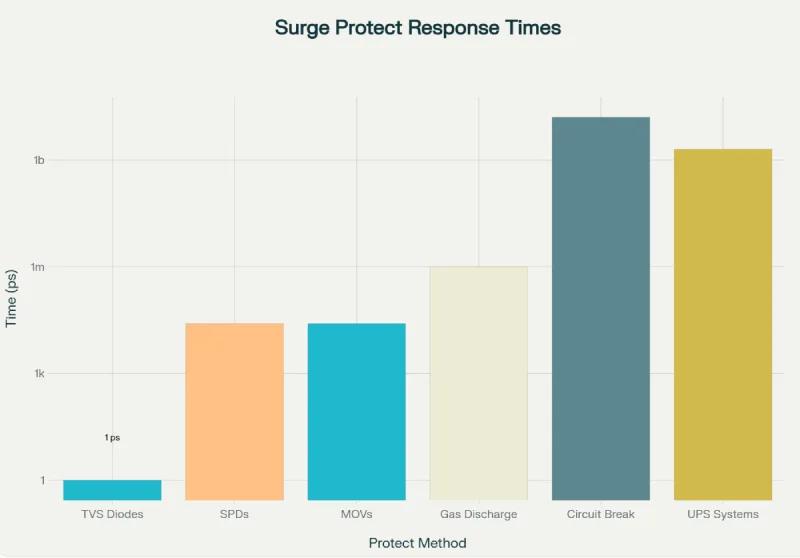
Сравнение текущей пропускной способности
Наибольшая энергия (100+ кА):
– Молниеотводы: защита на уровне передачи
– УЗИП Тип 1: защита входа в сервисное обслуживание 50–200 кА
Высокая энергия (20-100 кА):
– УЗИП Тип 2: защита распределительной сети 20–100 кА
– Газоразрядные трубки: защита телекоммуникаций 10–40 кА
Умеренная энергия (5-30 кА):
– УЗИП Тип 3: защита места использования 5–20 кА
– TVS-диоды: прецизионная защита электроники 10–30 кА
Ограниченная энергия (1-20 кА):
– Устройства защиты от перенапряжения для потребителей: защита устройств 1–4 кА
– MOV: защита компонентов 1–20 кА
Нет защиты от перенапряжения:
– Базовые сетевые фильтры: только номинал автоматического выключателя
– Автоматические выключатели: защита от перегрузки по току, отсутствие перенапряжения
Место установки и системная интеграция
Иерархическая установка SPD
УЗИПы устанавливают по системному принципу, обеспечивая скоординированную защиту:
1. СПД типа 1: Служебный вход – первая линия обороны
2. СПД типа 2: Распределительные щиты – основная защита здания
3. СПД типа 3: Место использования – конечная защита оборудования
Другие методы установки
– Системы бесперебойного питания: Уровень оборудования, требует подключения нагрузки
– Устройства защиты от перенапряжения для потребителей: Уровень устройства, портативный
– Защита цепи: Распределительные панели, ориентированные на безопасность
– Защита компонентов: Уровень печатной платы или внутри оборудования
– Оборудование для контроля качества электроэнергии: Уровень оборудования, конкретные применения
Соблюдение стандартов и нормативных требований
Структура стандартов SPD
– ANSI/UL 1449: Основной североамериканский стандарт SPD
– Серия МЭК 61643: Международные стандарты SPD
– Статья 285 НИК: Требования к установке УЗИП
– Обязательные требования: NEC 2020+ требует установки устройств защиты от перенапряжения для жилых помещений
Другие стандарты методов
– Системы бесперебойного питания: UL 1778, серия IEC 62040
– Автоматические выключатели: UL 489, серия IEC 60947
– Устройства защиты от перенапряжения для потребителей: UL 1449 (классификация Тип 3)
– Защита компонентов: Различные стандарты, специфичные для компонентов
Экономические и практические соображения
Анализ затрат и выгод
Преимущества инвестиций в SPD:
– Защита всей системы в сравнении с затратами на защиту каждого устройства по отдельности
– Длительный срок эксплуатации при минимальном обслуживании
– Соблюдение нормативных требований при единичной установке
– Защита электропроводки здания и встроенной техники
Общая стоимость владения:
– Тип 2 СПД: $200-800 плюс установка защищает весь дом
– Устройства защиты от перенапряжения для нескольких потребителей: $20-100 каждый, требуется несколько единиц
– Системы бесперебойного питания: $100-5000+ плюс расходы на замену батареи
– Ущерб от перенапряжения: Среднегодовые потери промышленного предприятия составляют 1439 млрд. долл. США в год.
Требования к обслуживанию
Низкие эксплуатационные расходы:
– СПД: мониторинг состояния, периодические проверки
– TVS-диоды: не требуют обслуживания
– Автоматические выключатели: периодические испытания
Высокие эксплуатационные расходы:
– Системы бесперебойного питания: замена аккумулятора каждые 3–5 лет
– MOV: Замена после деградации
– Стабилизаторы напряжения: замена фильтров, калибровка
Рекомендации по конкретному применению
Жилые приложения
Основная защита: УЗИП типа 2 на главной панели (требование NEC 2020+)
Вторичная защита: УЗИП типа 3 для чувствительной электроники
Резервное питание: ИБП для критически важного оборудования (компьютеры, медицинские приборы)
Коммерческое и промышленное применение
Основная защита: УЗИП типа 1 или 2 на входе в помещение
Защита распространения: УЗИП типа 2 на подпанелях
Защита оборудования: Устройства защиты от перенапряжения типа 3 и ИБП для критически важных систем
Специальная защита: Стабилизаторы мощности для чувствительных процессов
Телекоммуникации и центры обработки данных
Защита переменного тока: Скоординированная установка УЗИП (типы 1, 2, 3)
Защита постоянного тока: Специализированные УЗИП для линий связи
Высокоскоростные данные: TVS-диоды для защиты сигнальных линий
Критические системы: ИБП с резервным аккумулятором для бесперебойной работы
Краткое изложение основных отличий
Устройства защиты от перенапряжения SPD против устройств защиты потребителей от перенапряжения
– Обработка энергии: УЗИП выдерживают ток 20–200 кА против 1–4 кА для потребительских устройств
– Область защиты: Защита всей системы в сравнении с защитой отдельных устройств
– Установка: Стационарное крепление на панель против портативного подключения
– Стандарты: Профессиональные электротехнические стандарты и стандарты потребительских товаров
– Продолжительность жизни: Рассчитан на длительный срок службы и не требует замены после значительных скачков напряжения
Системы защиты от сбоев (SPD) против систем бесперебойного питания (UPS)
– Основная функция: Защита от перенапряжения против резервного питания
– Время отклика: 25 наносекунд против 2–10 миллисекунд
– Обработка энергии: Высокий импульсный ток против ограниченной защиты от импульсных перенапряжений
– Обслуживание: Минимальная или требуется замена батареи
– Расходы: Единовременная установка по сравнению с текущими расходами на батарею
Устройства защиты от перенапряжения против оборудования контроля качества электроэнергии
– Тип защиты: Защита от переходных перенапряжений и качество электроэнергии в стационарном режиме
– Скорость отклика: Наносекунды против миллисекунд
– Применение: События скачков напряжения в сравнении с непрерывным регулированием мощности
– Установка: Параллельное соединение против последовательной установки
Заключение
Устройства защиты от перенапряжения представляют собой специализированный и высокоэффективный подход к защите от перенапряжения, который принципиально отличается от других методов защиты систематическим применением, соответствием нормативным требованиям и комплексными возможностями защиты. В то время как другие методы, такие как системы бесперебойного питания, автоматические выключатели, металлооксидные варисторы (MOV), TVS-диоды и стабилизаторы напряжения, играют важную роль в электрозащите, УЗИП обладают уникальными преимуществами благодаря:
– Стандартизированная система классификации (Типы 1, 2, 3) для скоординированной защиты
– Быстрое время реагирования (25 наносекунд) для эффективного ограничения перенапряжения
– Высокая токовая пропускная способность (20 000–200 000 ампер) для случаев серьезных перенапряжений
– Комплексная нормативная база с особыми требованиями NEC
– Систематическая иерархия установки для защиты всего здания
Ключевое отличие заключается в том, что УЗИП обеспечивают базовую защиту от перенапряжения для всей электросистемы, в то время как другие методы обычно защищают отдельные устройства или решают различные электрические проблемы. Для современных электроустановок наиболее эффективен многоуровневый подход к защите, сочетающий правильно подобранные УЗИП с соответствующими дополнительными методами защиты, основанными на конкретных требованиях к применению.
Понимание этих различий позволяет специалистам по электротехнике разрабатывать комплексные стратегии защиты, которые отвечают как эксплуатационным показателям, так и нормативным требованиям, оптимизируя при этом инвестиции в защиту в жилых, коммерческих и промышленных помещениях.
Связанные
Что такое устройство защиты от перенапряжения (УЗИП)
Мнение сообщества: лучшие советы по использованию устройств защиты от перенапряжения (УЗП) на Reddit
Как выбрать правильный SPD для вашей системы солнечной энергии
Устройства защиты от перенапряжения: плюсы и минусы
Устройства защиты от перенапряжения против ограничителей перенапряжения

